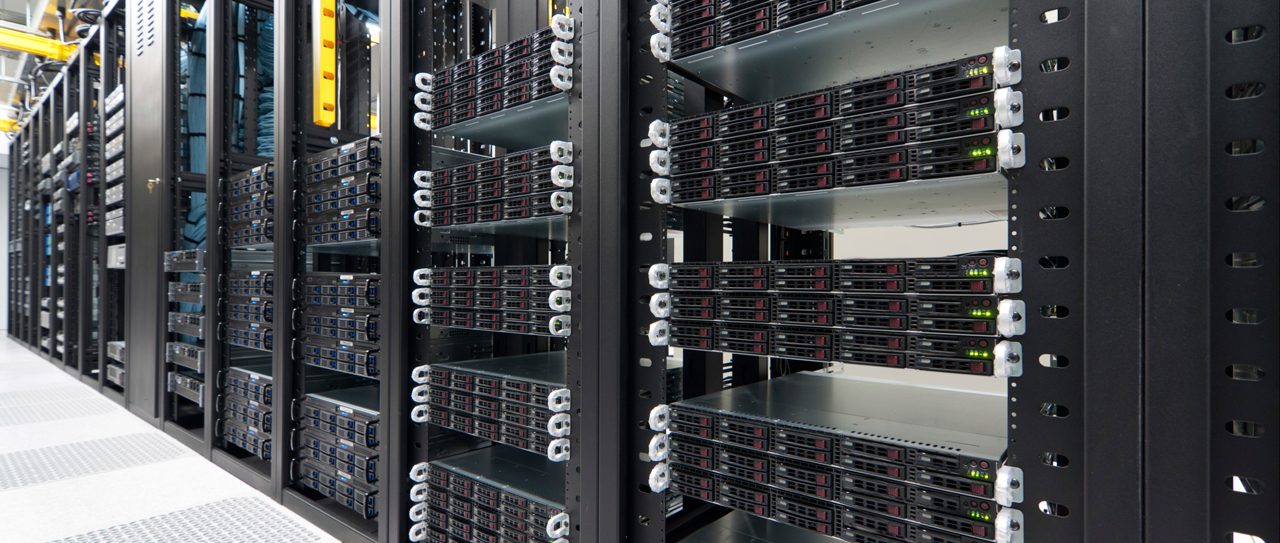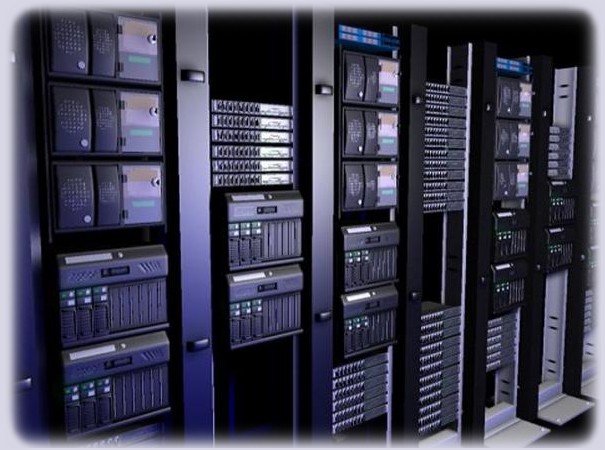Colocation from In-House to Remote Data Centers
 There were a myriad of scenarios why servers, routers and IT hardware had been hosted in-house, and now have migrated that infrastructure to a remote data center, effectively collocating their services.
There were a myriad of scenarios why servers, routers and IT hardware had been hosted in-house, and now have migrated that infrastructure to a remote data center, effectively collocating their services.
Businesses that collocate servers at data centers – buy, manage and sustain their own IT equipment. The data center provides the building, redundant power sources, cabinet space, blended bandwidth (Internet connectivity) and safe environment (moisture, fire, smoke) – plus electronic and physical security.
Consider for a moment what it takes to manage an IT network in-house.
Aside from floor space, there are backup and security requirements, staffing and monitoring considerations, and bandwidth allocations. Once upon a time a couple of load balanced T1’s could handle the load for even the most robust of in-house networks, but not in today’s world. And let’s not even talk about in-house solutions that depended on ISDN, DSL or Frame Relay connectivity. Data centers routinely offer 100Mbps connections today, while most offer GigE uplinks.
Very few data centers are constrained anymore to one backbone carrier, instead increasingly so across a blended backbone of multiple carriers and diverse fiber paths. Do you need to cross-connect to a carrier not offered on the provider’s posted collocation packages? That’s not possible in-house, but it is possible in a data center.
The bottleneck has always been the lack of scalable connectivity
– or sometimes just the reliability of the connection itself. An unfortunate aspect of in-house networks is that if your network goes down, not only can’t your staff get any work done, your client’s can’t access your site either. And even worse, some incoming connections included voice and data lines across the same wire, so phone calls disappeared as well. What is a production hour worth to your business?
What about disaster scenarios?
Data centers have alarms for moisture levels, rises in temperature, detection of smoke and so on. At 2AM in the morning, even if you had these types of alarm systems in place locally, how soon could someone from your IT staff realistically respond? With IT staff on-hand 24/7/365, data centers eliminate that worry. That doesn’t mean that disasters can’t happen, but the response time to recover is greatly diminished.
I’ve actually seen a network go down in-house because a delivery service man accidentally knocked a T1 connection ever so slightly out of place. Conversely, access to data centers is very tightly controlled, and at least in most data centers, you have the option of leasing a private cage to house your servers.
So that do you get with colocation?
Let’s start with connectivity to BGP networks which will afford your business maximum online reliability and uptime, followed by redundant power sources in terms of a UPS and multiple diesel fuel generators. If power goes out in your building, rest assured that your servers will stay online at the data center.
Data centers are also monitored 24/7/365 with electronic sensors for temperature, moisture, smoke and fire.
Scalability
If you’re running out of physical space in-house, or require connectivity that’s not possible in your current location, collocation services can be rapidly deployed and are extremely scalable. If you require increased amounts of bandwidth, do some math first to avoid overage fees. Contract for what you should realistically expect to use.
If your bandwidth runs in spurts, consider contracting on the 95th percentile basis. This gives you the availability to opt for a 100Mbps plan but burst at times to higher speeds on a GigE uplink.
Colocation Pros:
- The risk of losing any mission critical data is greatly diminished – from theft, vandalism, fire, floods or loss of power.
- You can still work on your own equipment if the data center is in close proximity to your business. This would save your business the expense of third party labor and parts.
- Over time, the savings, at least compared to dedicated servers, increase over time.
- It’s highly scalable, both in terms of rack space and connectivity.
- Depending on your method of accounting, it would be advantageous to show your servers as fixed assets on your balance sheet, and if you’re using the accrual method, you can factor in depreciation.
Colocation has become an extremely cost-effective solution
– both in terms of housing your servers in a physically secure environment and in reducing payroll expenses for in-house IT staff.

BROUGHT TO YOU BY PROLIMEHOST
We’ve been in the web hosting industry for over a decade, helping hundreds of clients succeed in what they do best and that’s running their business. We specialize in Virtual Private Servers (VPS) and dedicated servers, with data centers in Los Angeles, Denver & Singapore.
VPS SERVICES: LIGHTNING FAST SSD VIRTUAL SERVERS
Our Virtual Private Servers all feature high performance Xeon processors and SSD storage in a RAID10 configuration to optimize your server’s performance, which dramatically enhances visitor experiences on your site.
That speed is backed by unparalleled 24/7 support, featuring both outstanding response AND resolution times to maximize your uptime.
Now is the time to join the ProlimeHost virtual private server revolution.
DEDICATED SERVERS: BACKED BY A 99.9% SLA NETWORK UPTIME GUARANTEE
We only use enterprise-class hardware in our dedicated servers and offer a four (4) hour hardware replacement. Throw in IPMI for remote management, support for public and private networks, free operating system (OS) re-installs, and SATA, SAS & SSD (including NVMe) storage. Call 1-877-477-9454 or contact us. For everything from gaming, AMD and GPU servers to cheap dedicated servers, we’re here to help.
ASIA OPTIMIZED SERVERS: IMPROVING CONNECTION SPEED AND QUALITY
Procuring an Asia optimized server improves the connection speed and quality between the server and the users in Asia or China. This can reduce latency, packet loss, jitter, and bandwidth issues that can affect the performance and reliability of the server and the applications hosted on it. For more information, please call 1-877-477-9454 or contact us.
- Overstock USA Dedicated Server Sale, Over 300 servers on SALE at Dirt Cheap price!! - June 30, 2025
- Five Additional Ways to Use Your VPS - June 27, 2025
- Some Tips to Successfully Sell Anything Online – POCCAD - June 26, 2025


